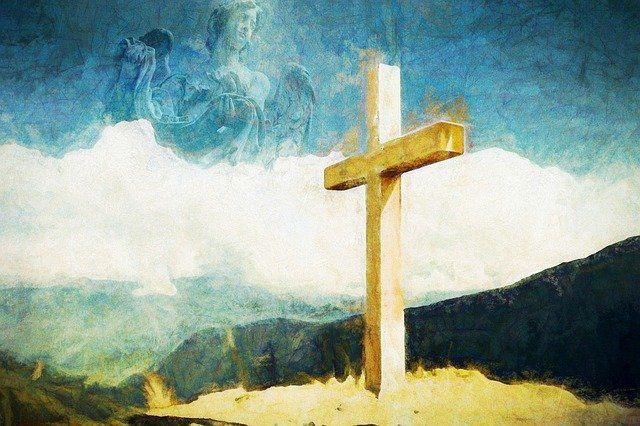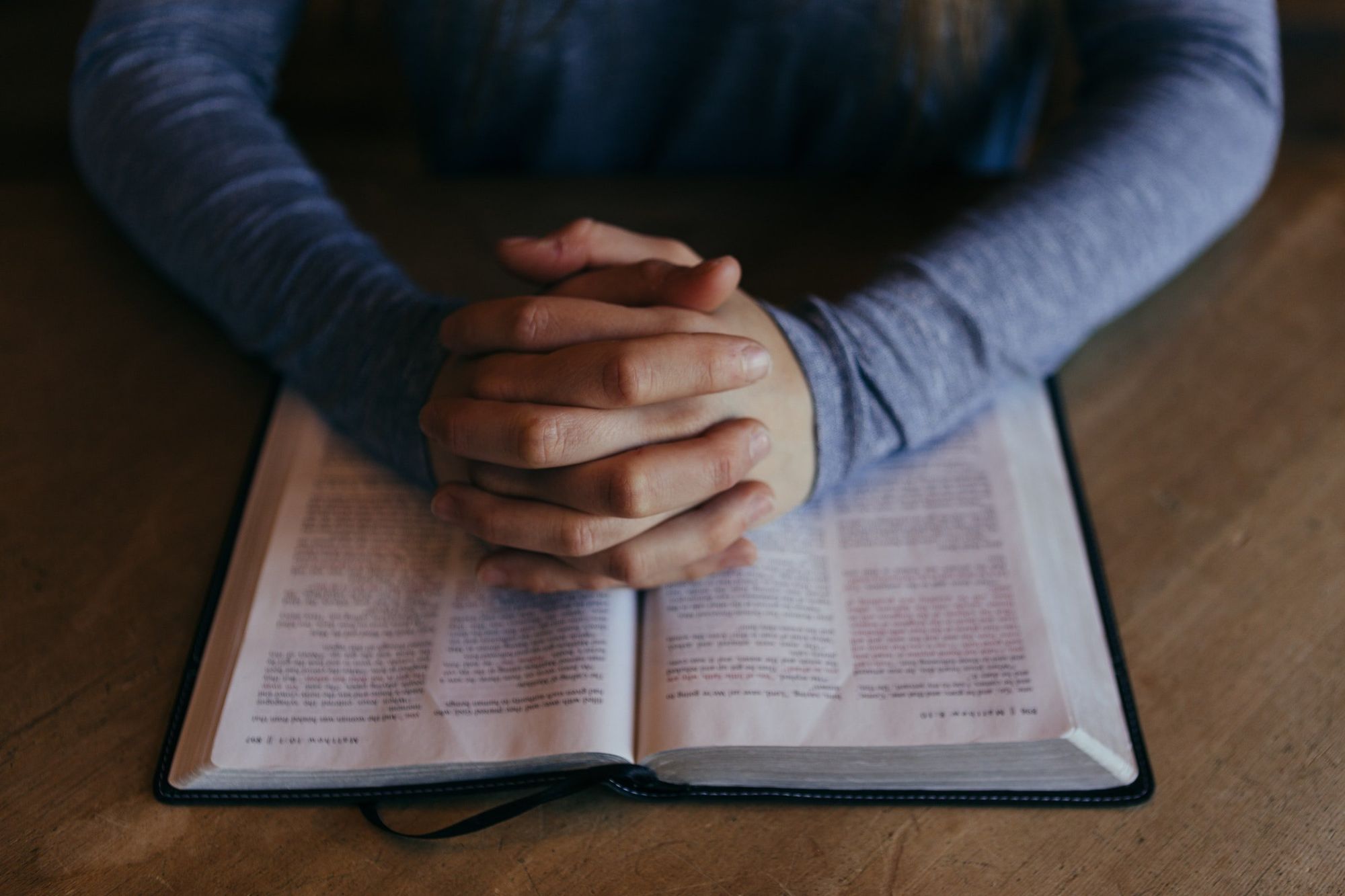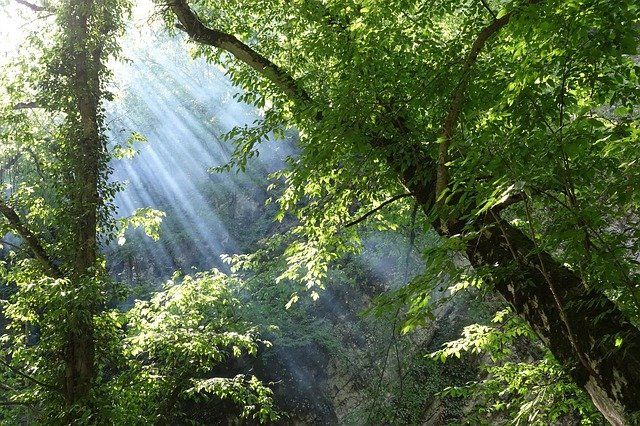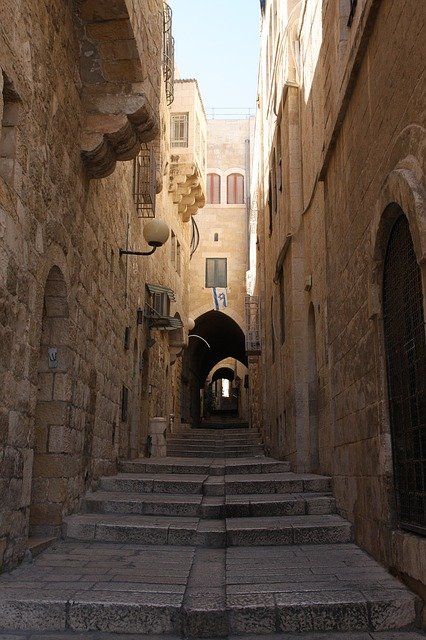What is heaven like? In cartoons and TV ads it is depicted as a cold and ethereal place. If it has any ‘land’, it is a bit like the North Pole -all white under a bright sky. More often there is just sky with puffy clouds supporting people in white robes playing harps and cracking jokes.
Such caricatures may be amusing, but they are a mockery of the Christian conception of heaven and life after death.
For all the rash of books on ‘near-death’ experiences and ‘day-trips to the next life’, the only source of hard information on what heaven will be like is God’s Word, the Bible.
And of all the passages that address this subject, Revelation 21 is the most vivid and detailed. It reveals a rich landscape with magnificent buildings. It is populated by the innumerable multitude of God’s elect, who live, work and worship around the awesome presence of God the Father, the Lord Jesus Christ and the host of heaven.
We will consider first what I will call ‘the geography of glory’. This is unfolded in Revelation 2:1-21. The ‘experience of glory’, which will be the subject of a subsequent study, is opened up in Revelation 21:22-22:5.
The former concerns what heaven will ‘look like’ – how we are to think of it as an environment. The latter describes what it will mean to live in that new heaven and new earth as people of God, resurrected and transformed.
In this and the subsequent article, we shall consider three aspects of the eternal heaven to come: a reconstituted creation (21:1), a recreated city (21:2, 9-21), and a redeemed citizenry (21:3-8).
A reconstituted creation
Heaven, as presently constituted, is invisible to us. It is the dwelling of God the Father and his exalted Son, the crucified and risen Jesus. It is ‘the third heaven’ (2 Corinthians 12:2) from which ‘the Lord looks down … upon the children of men, to see if there are any that did understand, whoseek God’ (Psalm 14:2).

This heaven, as Edward Donnelly has written, ‘is the arena of glory’ (Heaven and Hell, p.74) and when Christ returns, it will embrace the new earth, so that heaven and earth are one visible whole.
Glorious as it is already, heaven will undergo certain developments before the purposes of God in redemption are completed. Several components of the eternal heaven are presently missing.
For example, the history of creation remains to be consummated. The ‘kingdoms of this world’ have yet to become ‘the kingdoms of our Lord and of his Christ’ (Revelation 11:15).
The full number of God’s people – the population of heaven – has yet to be saved. Only at the end of history will God ‘send His angels with a great sound of a trumpet, and they will gather together his electfrom the four winds, from one end of heaven to the other’ (Matthew 24:31).
Earth transformed
John sees that ‘the first heaven and the first earth had passed away’ (compare Matthew 5:18; 24:35; 2 Peter 3:10; 1 John 2:17). Psalm 102:26 says: ‘They will perish, but you will endure; yes, they will all grow old like a garment; like a cloak you will change them, and they will be changed’.
This transformation is summarised in a startling way by John’s declaration that ‘there was no more sea’.
Hendriksen points out: ‘At present the sea is the emblem of unrest and conflict. The roaring, raging, agitated, tempest-tossed waters, the waves perpetually engaged in combat with one another symbolise the nations of the world in their conflict and unrest’ (More than Conquerors, p.199).
John Martin (1789-1854), a British artist well known for his apocalyptic canvases, painted ‘The Plains of Heaven‘ to illustrate Revelation 21. It is in the Tate Gallery in London.
A fleet of gondolas is bringing the redeemed to the shore of a great lake, to be met by angels in white robes. The holy city is supposedly descending in the clouds and the landscape is vast and beautiful, filled with flowers, the cedars of Lebanon, and the palm trees of Elim.

There is no sun, but light suffuses everything. There is no more sea, but rivers and lakes abound. This is no cartoon, but one man’s attempt to portray the renewed world of the glory to come.
Consolidation
There will be a consolidated ‘new heaven’ and ‘new earth’. This puts Revelation 21:1 in proper perspective. John sees a final transformation at the end of history in which heaven and earth are reconstituted as one entity which includes God’s heaven. This is also prophesied elsewhere in Scripture (Isaiah 65:17-19; 66:22-23).
We naturally think of going to heaven when we die and this is true enough. As the Shorter Catechism says: ‘The souls of believers are at their death made perfect in holiness (Hebrews 12:23) and do immediately pass into glory (2 Corinthians 5:1,6,8; Philippians 1:23; Luke 23:43)’.
But our hope reaches even further – to the day of resurrection. In 2 Peter 3 the full scope of our heavenly hope is declared – that ultimate, eternal, final form of heaven in which all things are made new, including our resurrected bodies and a reconstituted world .
God has his own timetable. He is both reserving this world for a fiery end, and bringing salvation to those in future generations who will not ‘perish but … come to repentance’ (v. 9).
Only when the latter is accomplished will the former take its course. Then ‘the day of the Lord will come as a thief in the night, in which the heavens will pass away with a great noise, and the elements will melt with fervent heat: both the earth and the works that are in it will be burned up’ (v.10).
Peter also makes practical applications. First, we ought to live godly lives (v.11). Second, we ought to be ‘looking for and hastening the coming of the day of God’ (v.12). And third, we should look expectantly for ‘new heavens and a new earth in which righteousness dwells’ (v.13).

The creation itself will also be renewed. It will cease to groan under the burden imposed by human sin and be ‘delivered from the bondage of corruption into the glorious liberty of the children of God’ (Romans 8:20-22).
Our present defiled environment will become the new environment in which God’s people will live for ever. There will be no Chernobyl, no Love Canal, and no Exxon Valdez in the ‘new heaven and the new earth’.
A recreated city
John also sees a recreated city (21:2, 9-21), a ‘new Jerusalem’ descending from heaven from God. This ‘holy city’ is represented as already existing. It descends from heaven as it presently is, so as to become the centre-piece of the new earth.
The expression ‘holy city’ reaches back to the ‘Salem’ of Melchizedek, who prefigured Christ (Hebrews 7:1-21). It relates to David’s Jerusalem, where God presenced himself in the Temple, and to Mount Zion, which in Scripture represents the church as the people of God (Galatians 4:26-28; Hebrews 12:22).
The centrality of Jerusalem to the Old Testament church is expressed in the lament of the exiled Jews in Babylon: ‘If I forget you, O Jerusalem, let my right hand forget its skill! If I do not remember you, let my tongue cling to the roof of my mouth – if I do not exalt Jerusalem above my chief joy’ (Psalm 137:5).
‘Among the many illustrations that convey the nature of heaven to us’, observes E. M. Bounds, ‘the illustration of a city is the most striking … A city teems with life in its richest and most strenuous form.
‘It has never felt the chill of death … Graves have never been dug there … Heaven is a city of life … Heaven knows no tears and has never felt a sorrow. It is filled with eternal, brilliant and vibrant life’ (Catching a Glimpse of Heaven, pp.29-30).

The church of Christ
This is what Abraham was looking for when ‘he waited for the city which has foundations, whose builder and maker is God’ (Hebrews 11:10). This is Jerusalem as thechurch: ‘But you have come to Mount Zion and to the city of the living God, the heavenly Jerusalem, to an innumerable company of angels, to the general assembly and church of the firstborn who areregistered in heaven, to God the Judge of all, to the spirits of just men made perfect’ (Hebrews 12:22-23).
Jerusalem the place is not the point. The real meaning is in the words ‘prepared as a bride adorned for her husband’ (compare John 3:29; Revelation 22:17). The imagery is straight from the prophets as they refer to the relationship between God and his people (Isaiah 49:18; 62:5; Jeremiah 33:11).
Christ is the bridegroom and the church is ‘the bride, the Lamb’s wife’ ( Revelation 21:9; Isaiah 61:10).
Next month we shall consider this glorious city in greater detail.



